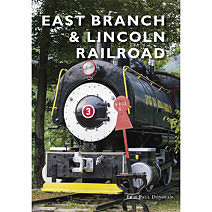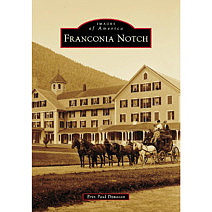James Everell Henry, Lincoln – Born in Lyman, New Hampshire on April 21,1831, James E. Henry died at his home in Lincoln, New Hampshire on April 18, 1912. He was a 19th and 20th-century timber baron best known for his logging practices and building of the Zealand Valley Railroad (1886-1897, end date is for entire Zealand operation) and East Branch & Lincoln Railroad (1893-1948) in the New Hampshire White Mountains. He forever changed the landscape of the White Mountains with his "cut it all" logging practices.
The date James Everell Henry died varies; some sources state April 18, while others state April 19, 1912. In the book, The Life of James Everell Henry (2016), written by Henry’s grandson, James Everell Henry II, the date is April 18, 1912.
More than likely, he will always be remembered as a timber baron, but he unknowingly made a contribution to the White Mountain National Forest that benefits us today. The old railroad grade of the East Branch & Lincoln Railroad has given outdoors enthusiasts access to some of the most remote regions of New England.
If Henry didn't push his logging operations into the Pemigewasset Wilderness, it seems possible no established trails would exist today in this wilderness; it's often overlooked that many of the trails in the Pemigewasset Wilderness follow or utilize sections of the old East Branch & Lincoln railroad grade.
So the next time you are hiking along a trail in the Pemigewasset Wilderness, take a moment to realize you are more than likely following one of James E. Henry's railroad beds. You can read more about J.E. Henry's East Branch & Lincoln Railroad here.
Happy image making..
© Erin Paul Donovan. All rights reserved | White Mountains History | Purchase Our EB&L Railroad Book
To license any of the photos in this blog article for publications, click on the photo.
Owner of ScenicNH Photography LLC
Erin Paul is a professional photographer, writer, and author who specializes in environmental conservation and historic preservation photography mainly in the New Hampshire White Mountains. His work is published worldwide, and publication credits include: Appalachian Mountain Club, Appalachian Trail Conservancy, Backpacker Magazine, and The Wilderness Society. He has written two photo history books about the White Mountains: the East Branch & Lincoln Railroad (2018) and Franconia Notch (2024).






ScenicNH Photography LLC
Specializing in environmental conservation and historic preservation photography mainly in the White Mountains region of New Hampshire, Erin Paul’s photography and writing focuses on the history of the White Mountains, and telling the story of abandoned places and forgotten historical sites.